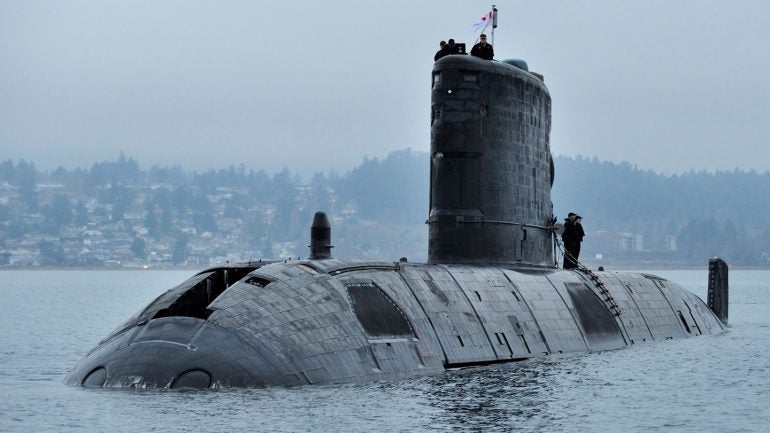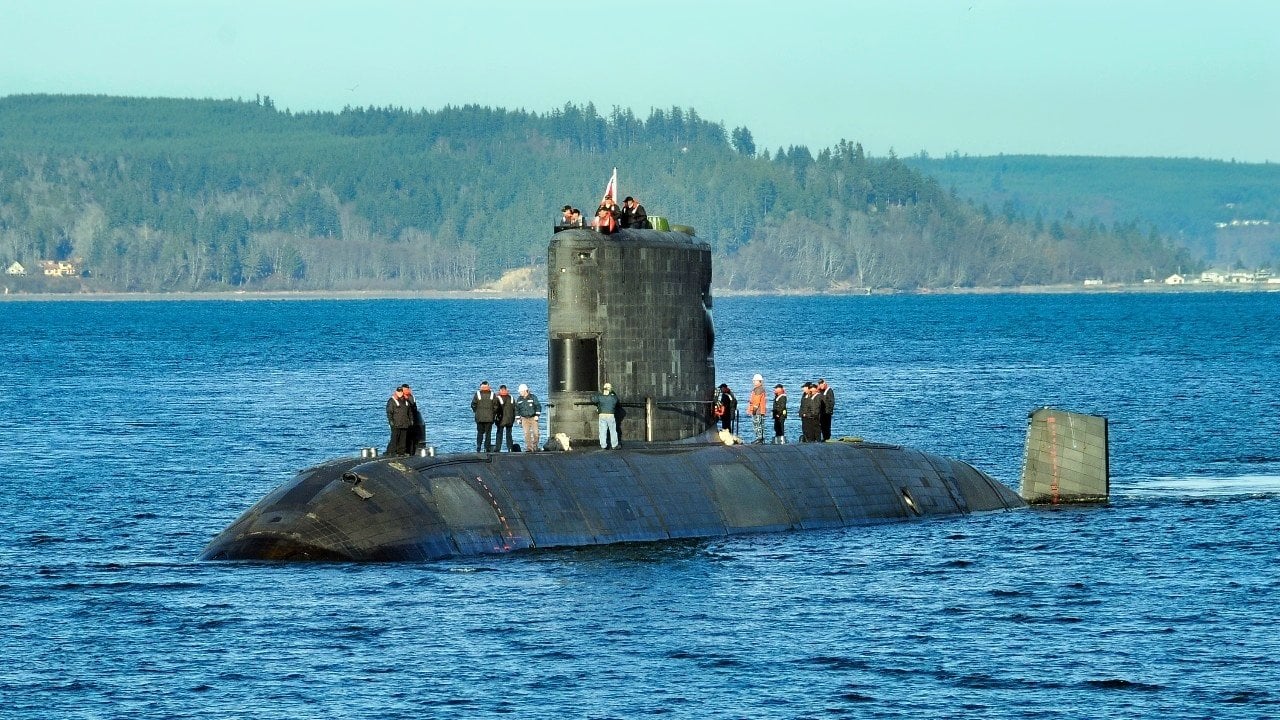Submarines: Apex Predator of the Seas
"Today, Canada has three submarines based in the Pacific Ocean, and another in the Atlantic. Due to their obsolescence and wear, the threat they pose to us is not so significant.""But new submarines can radically change everything-- and not in our favour.""We have time to prepare -- Canada will not have these submarines instantly. You just need to use this time properly."In straits with difficult ice conditions, a secretive non-nuclear submarine with a high-class sonar system and modern torpedoes will prove to be a deadly enemy for any nuclear submarine.""Moreover, you can be sure that she will 'win' the first shot. This can seriously change the balance of power in some cases."Russian defence journalist Alexander Timokhin
 |
| HMCS Victoria travels through the Straits of Juan De Fuca from operations with the US Navy, 26 February 2015. Credit: LS Zachariah Stopa/Canadian Ministry of National Defence. |
Finally, after the Canadian Navy struggled for years with dysfunctional second-hand submarines bought from the United Kingdom, each of which has spent far more time in dry dock for repairs than underwater in usefully reliable condition, a new plan to order 12 modern, non-nuclear submarines has been declared. Required to perform critical service under the Arctic ice. Russia's aggressively possessive territorial claims to areas of the Arctic that have long been assumed to be Canadian territory make it imperative that Canada respond appropriately by being more vigilant and capable of adequately challenging Russia's claims.
The proposed Canadian submarine fleet to bring the country's defences in line with the threats posed by Russia -- and just possibly China as well -- is meant to come fully equipped with the latest torpedo and sonar technology. As such those new submarines would pose a "radically" altered threat, writes Alexander Timokhin. The new submarines' specifications would make it difficult for Russian nuclear-powered ships to counter. And according to Timokhin, they could lie on the sea floor ghosting Russian naval bases to gather intelligence, without Russia's awareness.
Moscow, urges the Russian defence journalist, would do well in its own defence to initiate measures to respond to the new submarine fleet meant to become reality on the near horizon. Canadian Defence Minister Bill Blair last month announced his government planned to plow ahead with procurement of a dozen new diesel-electric subs to replace the four Victoria-class submarines purchased second-hand in the 1990s from the U.K., plagued by problems such as fire breakouts in an engine room, breakdowns in electrical systems, rusting out hulls, and other premature malfunctions.
The new submarines would be able to spend much more time under the ice with their air-independent propulsion system, in comparison to the Victoria-class vessels. Although they would have less capability than nuclear-powered submarines, in the event of a confrontation under the waters of the "Canadian Arctic Archipelago they would have an edge. Nuclear submarines must maintain running engines at all times that emit a hum detectable by other ships.
Non-nuclear submarines on the other hand, such as those Canada is ordering, can shut down their motors: "Unlike American submarines, [which are nuclear-powered] Canadian submarines would be able to lie on the bottom near Russian naval bases, primarily in Kamchatka" worries Timokhin. Kate Todd, naval expert at Global Affairs Institute, dismisses the Russian concerns pointing out that Canada's fleet of subs would be dispatched four each off its West, East and Arctic coats solely defensively.
Their use would be to monitor sea traffic and deter adversaries like Russia from venturing into Canadian waters without securing permission. On the other hand, given Canada's laughably maladroit system of military purchases of any kind, talk of intentions without follow-up into secure order, purchase and delivery is more Canada's style. Still, there is a timeline of around 2035, which should give a nervous Russian military more than ample time to prepare, at the urging of its military procurement expert, Timokhin.
"For Russia, the worst option would be a German submarine", moans Timokhin. However, the rest of the submarines [Spain's Navantia, South Korea's Hanwa Group and Sweden's SAAB, alongside Germany's Thyssen Krupp are lining up their option opportunities at Canada's call to get serious about supplying its Navy with reliable new and technologically-updated submarines for purely defensive purposes.
 |
| The HMCS Chicoutimi in Esquimalt, B.C., in 2017. Photo by CHAD HIPOLITO /THE CANADIAN PRESS |
"I think that [acquiring a new fleet of submarines] will have quite an impact on our ability to monitor and deter Chinese or Russian craft coming into Canadian waters.""Submarines are kind of like the apex predator of the seas -- they are able to monitor things but they also have quite a lethal capability. So you wouldn't want to be doing something illegal or aggressive in our waters if we did have them.""We've had a submarine fleet in Canada for over a hundred years now, and submarines are really key to controlling access, deterring potential adversaries, protecting Canadian interests at home and abroad.""If we were to lose that capability, that would be a major strategic loss."Kate Todd, Canadian Global Affairs Institute fellow, naval expert
Labels: Arctic Challenges, Canadian Submarine Procurement, Russian Awareness, Russian Territorial Ambitions
0 Comments:
Post a Comment
<< Home